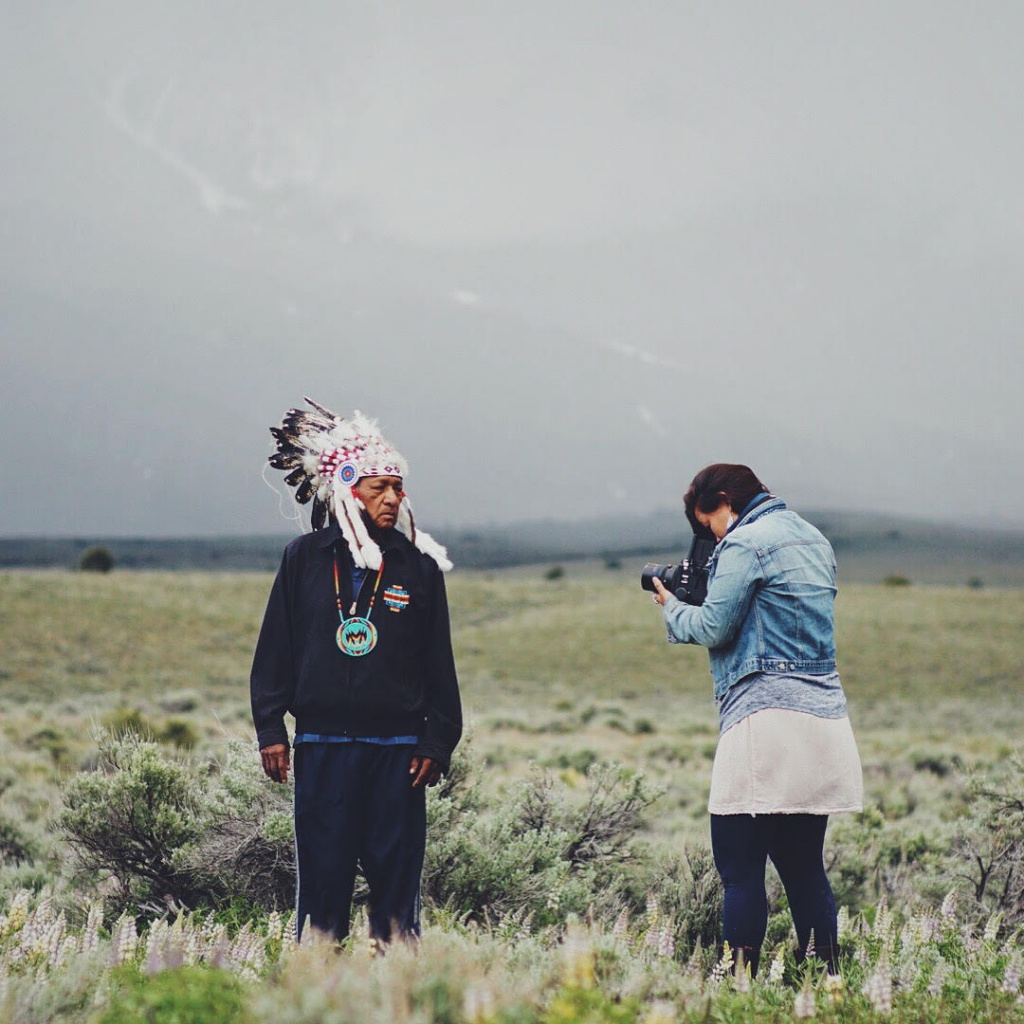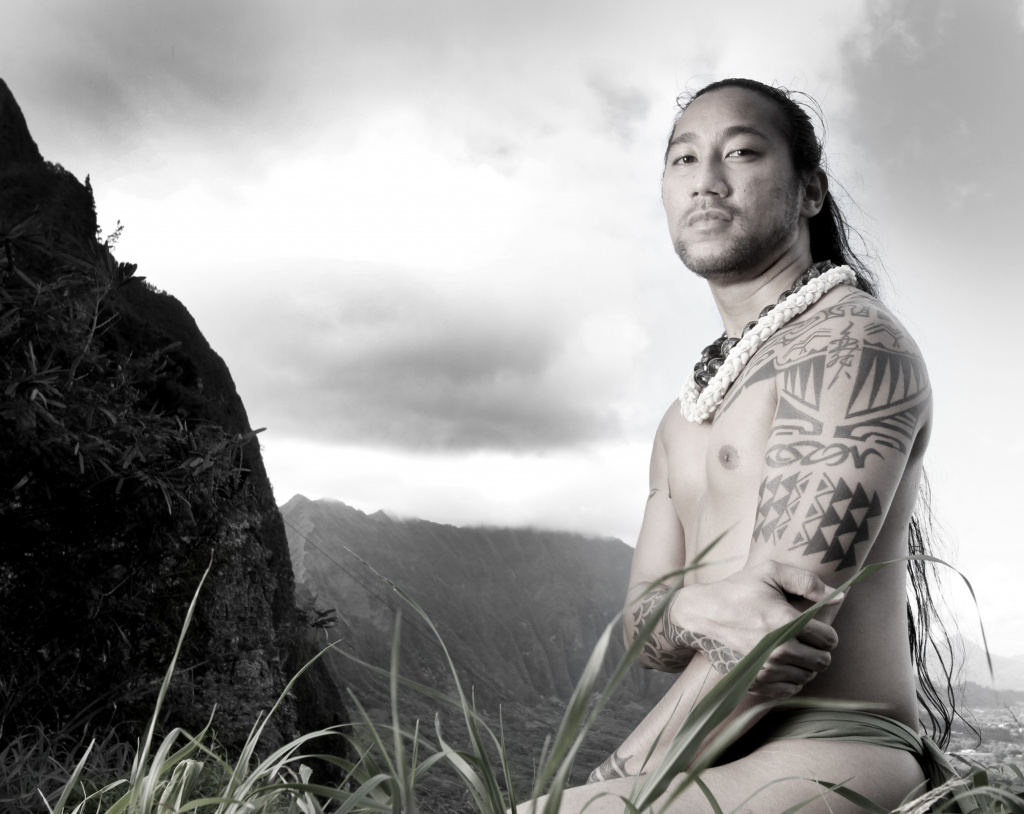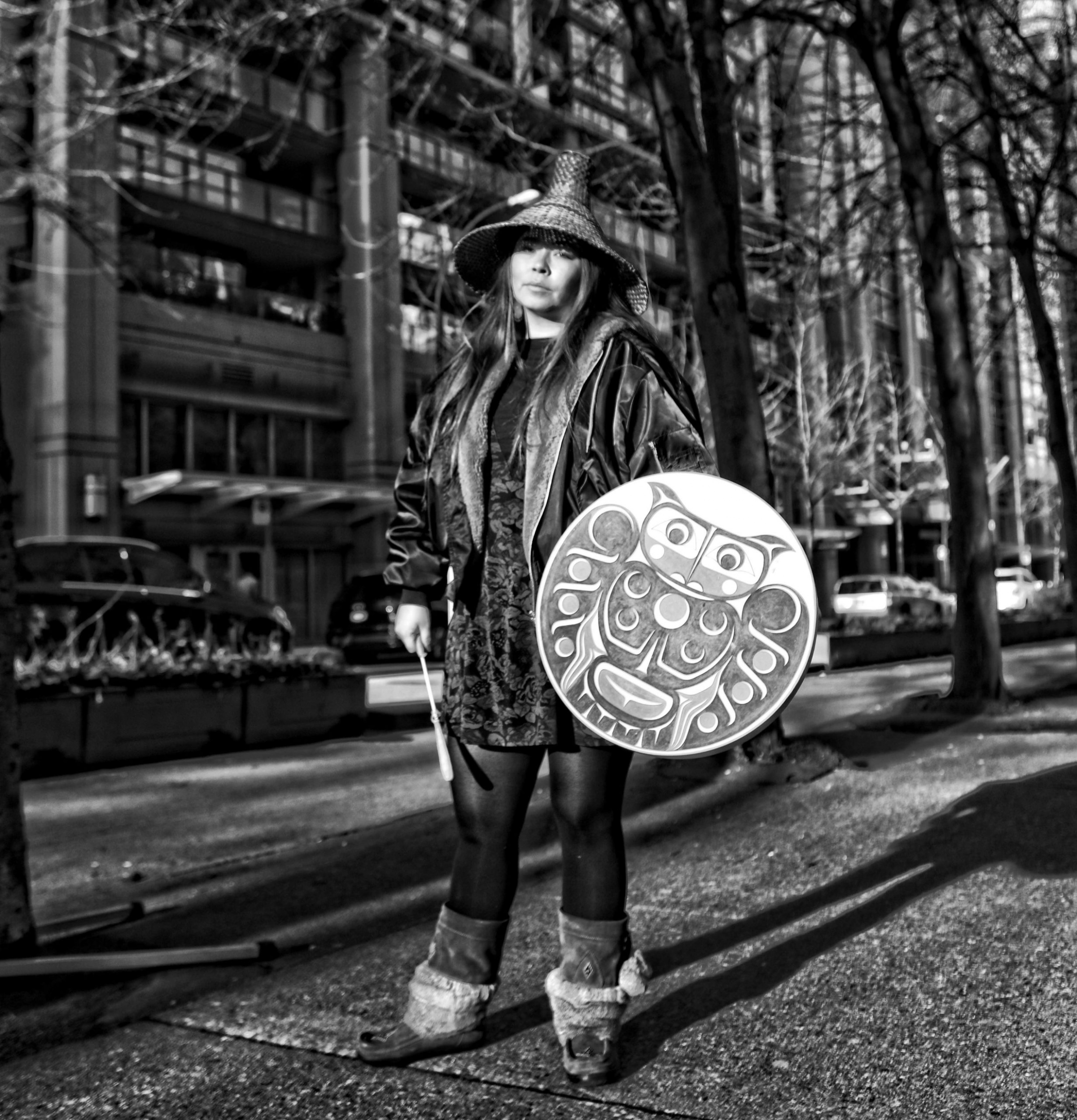Matika Wilbur is a Swinomish and Tulalip [tribes in the Puget Sound region] storyteller and photographer from Washington. After studying at the Brooks Institute of Photography and Rocky Mountain School of Photography, she worked as a fashion photographer in LA before deciding to become a full-time photographer focused on her own Native American communities. She now works on Project 562, a grant and crowd–funded initiative that shares stories from more than 562 Tribal Nations in the US.
Project 562 aims to create a comprehensive visual curricula to represent the thriving, culturally diverse identity of contemporary Native America. Matika hopes to illustrate people’s true experiences, especially in communities that are often neglected or stereotyped in popular media. We recently caught up with Matika to find out more about her journey and mission.

When did you first develop an interest in photography?
My brother gave me my first camera when I was 6. While I was growing up, my mom had a Native American art gallery in the town near our rez [reservation], and amazing famous artists would visit. I had the opportunity to meet carvers, basket weavers, potters, painters—all of them were so impressive, and I’d try to mimic them, but I didn’t have the natural talent. One day I met a photographer from Prague, and he was photographing “real Americans” for a book project for his government. He came to us asking for help. I took him to several “cultural doings” and watched him take pictures. It felt so odd to have an outsider taking our picture in traditional spaces. I thought to myself, “Hey, I can do this.”
RELATED | Streets of Casablanca: An Interview with Moroccan Photographer Yoriyas
When you left your full-time job in LA, how did you make the financials work?
I barely made it work. I was living off of beans, rice, and occasional Spam. I took an internship in South America where I was paid $500 for three months. Luckily I had saved money from my annual fireworks business (she and her mother run an annual fireworks business near the Swinomish Reservation), so I supplemented my income with those earnings. I also did freelance work. I worked with small businesses to help them build websites. I did headshots, corporate portraits, wedding photos, even boudoir photos. We made pop-up art galleries in Seattle and sold native art. When I was living in Mexico, I rented an alleyway where I did woodblock emulsion transfer prints of iconic places and sold them to tourists. It was a real hustle.
What motivated you to leave your commercial career?
It just seemed so empty to me. I couldn’t imagine a lifetime of photographing and glorifying skinny white women. When I went to college, I was the only Native person at my university. None of the stories we were encouraged to tell were indigenous stories or stories about people of color. I just knew that if I stayed in that industry I would become somebody I didn’t want to be.
None of the stories we were encouraged to tell were indigenous stories or stories about people of color.
How did Project 562 get started?
Project 562 is my fifth long-term project. My first projects focused on identity, cultural resilience, the effects of the boarding school era, and Urban Indian identity. Those exhibitions were shown at national galleries like The Seattle Art Museum and The Royal British Columbia Museum. When my work started to become more acclaimed, elders in my community asked me to come back to Tulalip to teach students what I’d learned.
While I was teaching I was asked to compile a comprehensive Native American photography curriculum. While seeking materials I realized the dire misrepresentation of indigenous peoples. We’ve mostly been represented by non-Indians, and so much of the work is glorified poverty porn. I realized I needed uplifting images to share with my students. The images needed to highlight our amazing stories of resilience, but those stories weren’t readily available. There isn’t one single publication that represents all of the tribes in the U.S. That’s when we began dreaming of the possibility for something like Project 562. I played with the idea for a while and asked permission. Then I put up a Kickstarter. All of the sudden, I was hitting the road.
What is a typical day on-site like?
In the Western system, if you take the picture, the picture belongs to you. But if I follow traditional indigenous protocol, just because I sing somebody’s song doesn’t mean the song is mine. In Western culture, we talk about “I,” “mine,” and “my.” Indigenous communities tend to think of “we,” “us,” and “ours.” The question is, “How can I do the project in a way that’s going to help the community?” That has shifted the approach.
A typical day is hard. My assistants often have a fantasy of the project from Instagram and YouTube. They imagine we’re going to eat great food, see magical places, and meet cool people. Yes, all of that will happen, but you’re also going to wake up at 5am to get good shots. You might sleep at a truck stop. The road is a hard place to live. I just finished photographing an annual canoe journey. I shot 24 hours a day for nine days, taking cat naps. I was supposed to be shooting the Shoshone-Bannock relay races today, but I had to throw in the towel. I haven’t had a day off in 70 days, so I’m taking some time to recover. There are all of these great stories that need to be told.

How have people helped and supported you along the way?
After my first year on the road for Project 562, our second kickstarter raised $250,000. We also received a grant from the Surdna Foundation for Social Justice to make 45 short films. People have fed me, given me a place to stay, or offered what they had to give along the way. That support has meant the world to me. All the people I’ve photographed have offered to share their story with me. This work is the collective power of many.
What do you hope will come from this project?
I’ve done my best to honor, appreciate, and uplift Indigenous nations. I hope I don’t do any harm to my community by telling these stories. I worry I discuss our social disparity too often. There’s enough poverty in Indigenous representation. What our children need is an opportunity to see themselves differently, to see themselves as powerful, beautiful, and resilient. There were major battles fought for us to live in this moment in our traditional territories. As for the colonizers, it’s hard to say what they will take away from this work. We’re fighting a major narrative shift—recent studies revealed 64% of third-year undergraduate students believe Native Americans are extinct. My work is a small effort to help them imagine their world differently and to connect with the indigenous narrative of the place they’re occupying. Not all of them will read about this work or take an interest in indigenous intelligence, but maybe one or two will, and we’d all benefit from that shift.
Photos by Matika Wilbur
This article originally appeared in the Fall/Winter 2018 issue of Sixtysix. Subscribe today.



